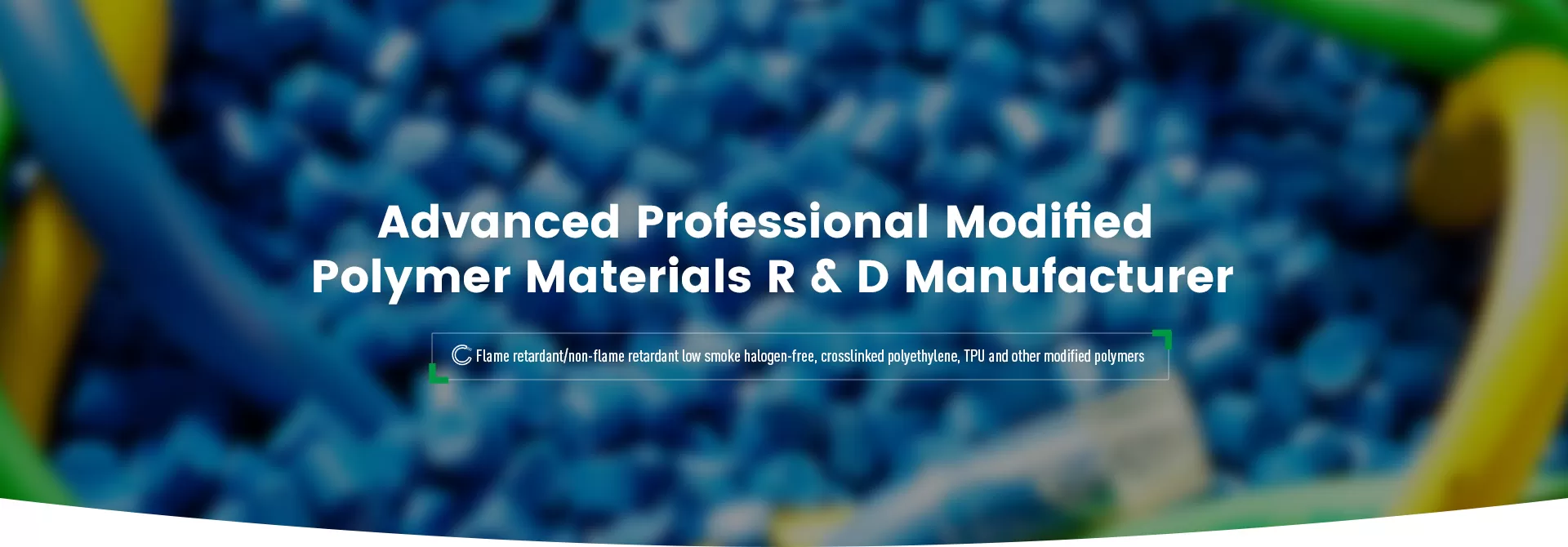
As rail transit systems develop towards high speed and intelligence, cable systems, as key infrastructure for train operation, communication, power supply and control, are facing more and more technical challenges. Different application scenarios such as urban rail, high-speed railway, tram, etc., have put forward higher standards for cables in terms of electromagnetic compatibility (EMC) performance, anti-interference ability, durability and flexible wiring capabilities.
In this context, the performance improvement of cable systems depends not only on structural design, but more fundamentally on material selection. At present, XLPE (cross-linked polyethylene) materials with excellent thermal performance, electrical performance and environmental adaptability have become one of the mainstream choices in rail transit cable systems, and are widely used in various structures such as power cables, control cables, and signal cables.

The rail transit field has highly special requirements for the use environment and performance of cable systems, mainly concentrated in the following aspects:
Complex electromagnetic environment: high-frequency electronic equipment works intensively, and the signal system is susceptible to interference
Compact mechanical structure: the cable needs to have good flexibility and repeated bending ability
The system has a long operating life: the material is required to have long-term thermal aging and mechanical stability
Strict fire retardant standards: especially in carriages, tunnels, and underground places, it is necessary to meet international standards such as EN45545 and IEC60332
The laying environment varies greatly: it is necessary to take into account the adaptability to multiple environments such as high temperature, low temperature, humidity, and vibration
Traditional PVC or non-cross-linked polyethylene materials can no longer meet the above comprehensive requirements, so higher performance, safer and more reliable XLPE cable solutions have emerged.
The so-called "XLPE cable solution" does not refer to cables using a certain general cross-linked material, but refers to:
Based on the specific working conditions of rail transit, around EMC performance, anti-interference ability, and flexible laying requirements, a cable material solution with functional XLPE as the core is constructed.
The key to this type of solution lies not in the cable structure itself, but in the core material used, namely the XLPE compound (cross-linked polyethylene compound) that has been formulated and developed for function.

Angreen XLPE Compounds for Railway Locomotive Cable
Rail transit's requirements for cable system performance ultimately need to achieve functional realization and reliability assurance at the XLPE compound level. Specifically including:
The signal transmission system in rail transit is extremely sensitive, and EMC cables need to work together in both the structural layer and the material layer. By adjusting the volume resistivity, antistatic ability and bonding performance of the XLPE compound with the shielding layer, leakage interference and external interference can be effectively reduced.
For densely wired train internal control systems, XLPE materials must maintain structural integrity while being heat-resistant, oil-resistant, and bend-resistant to maintain long-term insulation effects.
Railway transportation cables often need to pass through pipes, turn corners, and move repeatedly. XLPE compound needs to have a lower modulus and higher elongation to support the physical structure of flexible cables without sacrificing its mechanical strength and environmental resistance.
All XLPE materials must comply with rail transportation flame retardant standards to ensure that extremely low smoke and corrosive gases are released in the event of fire or short circuit to protect passengers. Typical application scenarios and product selection
| Application location | Cable type | Recommended XLPE Compound types |
| Carriage control system | Multi-core control/signal cable | Flexible low modulus + EMC-compatible XLPE insulation |
| Train main power connection | Medium voltage power cable | High temperature resistance, high dielectric strength XLPE insulation |
| Subway station power distribution system | Fixed low voltage cable | Flame retardant low smoke halogen-free XLPE sheath |
| Communication and data transmission | Shielded communication composite cable | Anti-crosstalk EMC special sheath XLPE compound life and equipment safety. |
| Item | Index Range | Notes |
| Operating Temperature Range | -40℃~125℃ | Highest Heat Resistance up to 150℃ |
| Volume Resistivity | ≥ 1×10^14 Ω·cm | High Electrical Insulation Grade |
| Flame Retardant Grade | EN60332-1/EN45545 R22 | EN 45545 HL3 Formula Available on Request |
| Tensile Strength/Elongation | ≥ 12MPa/≥ 200% | Flexible Cable can be Optimized to Higher Elongation Performance |
| Surface Finish | Good | Suitable for High Frequency Extrusion Production and Laser Printing Requirements |
We sell XLPE compounds for wires and cables.
XLPE compounds for rail transit support the following customized services:
Customize flame retardant grade, dielectric properties, and flexibility according to the project environment;
Provide multiple delivery forms of granules/powders/masterbatch premixes;
Can be equipped with customer extrusion process commissioning proposals and parameter control range tables;
Support EN, IEC, UL, RoHS, REACH and other certification requirements;
The reliable operation of rail transit cable systems depends not only on structural optimization, but also on the selection and performance guarantee of each layer of materials. The real "XLPE cable solution" is implemented in each batch of verified and long-term stable XLPE compounds. We are committed to providing professional, safe and sustainable material support for rail transit cable manufacturers and engineering integrators.